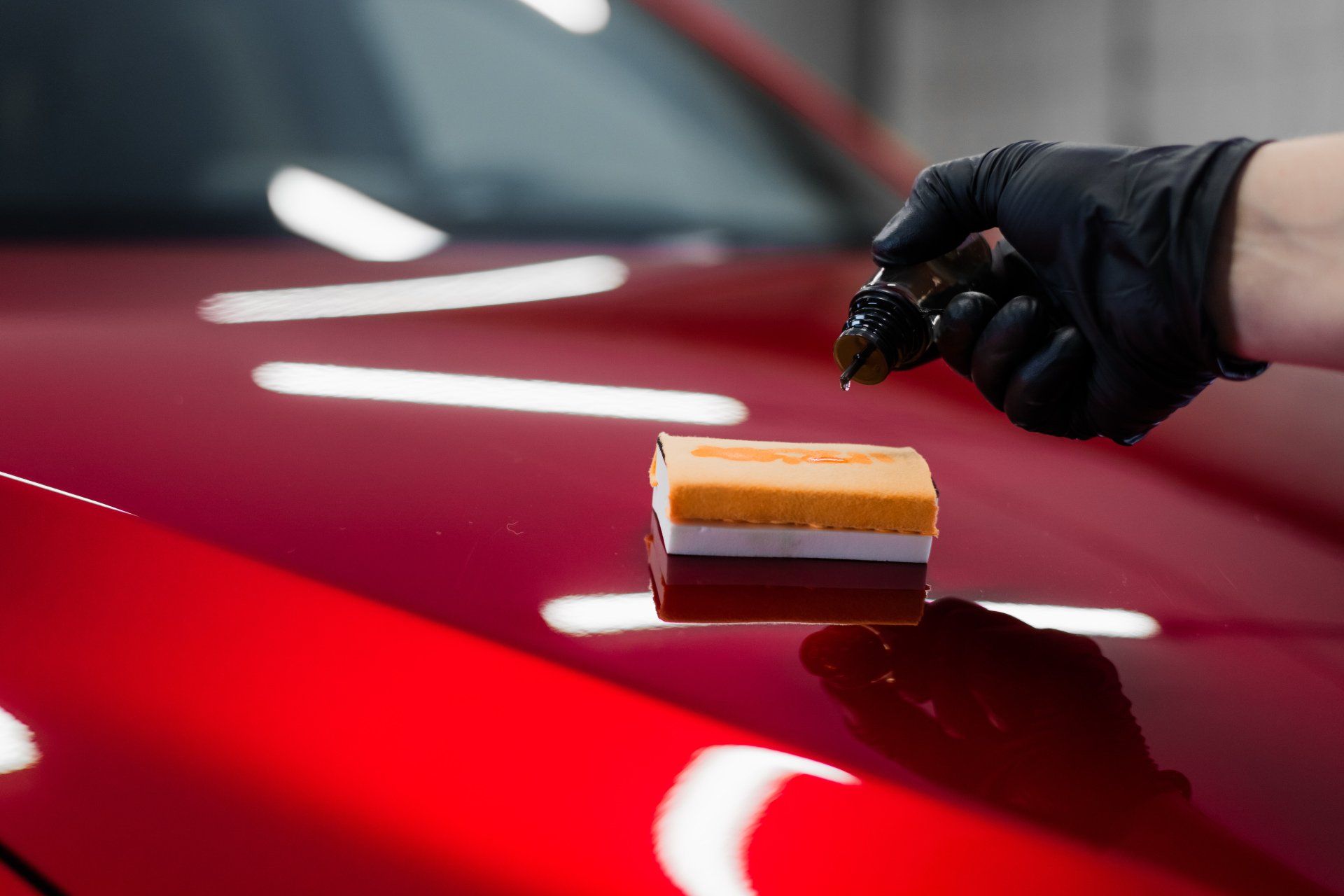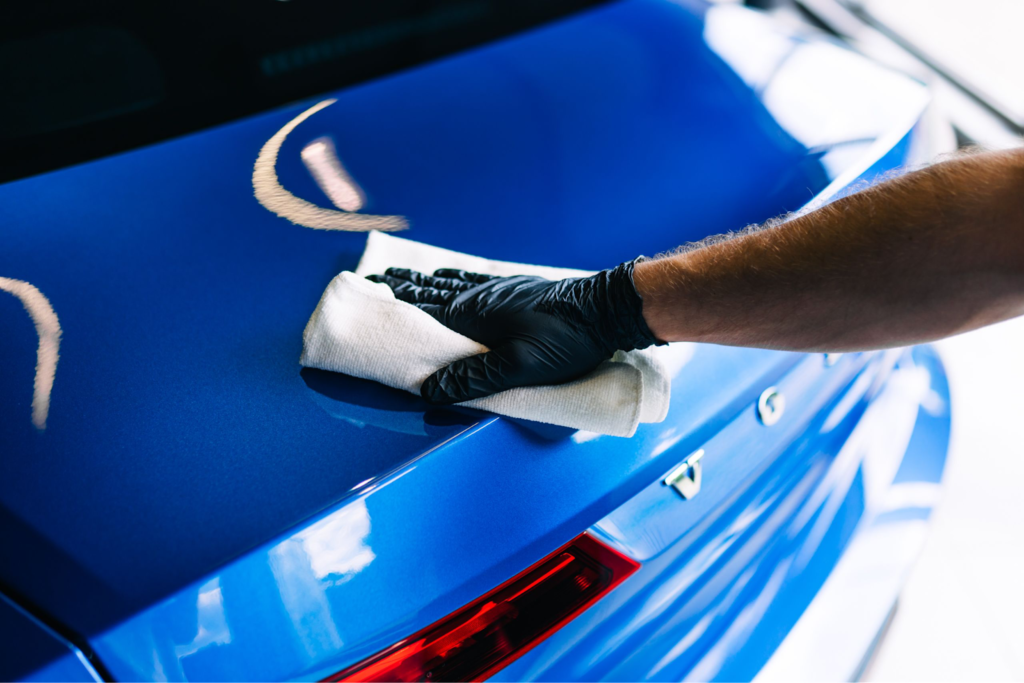How to Prepare Your Lorry for an Expert Ceramic Coating Treatment
How to Prepare Your Lorry for an Expert Ceramic Coating Treatment
Blog Article
Exploring the Various Kinds Of Coating for Cars: An Overview to Ceramic Options
In the realm of auto care, ceramic coatings have actually arised as a considerable advancement, providing exceptional security and aesthetic enhancement. These coatings, readily available in numerous formulations, existing vehicle proprietors with selections that vary from standard polymer-based remedies to innovative quartz-infused versions. Each kind brings unique features and benefits, influencing variables such as longevity, application convenience, and maintenance demands. As we explore these alternatives, comprehending the nuances of each layer kind comes to be crucial for making notified decisions. What sets apart one ceramic layer from another, and just how do these differences influence long-lasting automobile care?
Recognizing Ceramic Coatings
Ceramic finishings have become a prominent selection for cars and truck fanatics looking for to improve the appearance and safeguard of their cars. These advanced layers are consisted of silica or silicon dioxide, which, when applied to an auto's exterior, create a chemical bond with the manufacturing facility paint. This bond creates a protective layer that not only amplifies the gloss and depth of the paint yet also provides a powerful shield against environmental contaminants such as UV rays, bird droppings, and road crud.
A vital benefit of ceramic coverings is their hydrophobic residential or commercial properties. This means that water and other fluids bead up and roll off the surface area, substantially minimizing the possibility of water areas and making the automobile simpler to clean up. In addition, the layers offer enhanced resistance to small scratches and swirl marks, consequently protecting the automobile's beautiful appearance with time.
Furthermore, ceramic finishes are known for their longevity, typically enduring several years with correct upkeep (ceramic coating). Unlike typical waxes or sealants that need regular reapplication, ceramic layers provide lasting security, making them an economical option for car proprietors devoted to keeping their car's visual appeal and resale worth

Kinds of Ceramic Coatings
Amongst the myriad of safety services offered, ceramic finishes provide a series of types customized to meet varied vehicle demands. These innovative formulas mainly consist of polymer-based ceramic coverings, quartz-based finishings, and hybrid versions. Each type is crafted to offer differing levels of defense and sturdiness, satisfying specific customer choices and car requirements.
Polymer-based ceramic finishings are renowned for their convenience of application and solid protective buildings. They create a flexible, yet resilient layer on the vehicle's surface area, properly defending against ecological impurities and small abrasions. These layers are excellent for those looking for an equilibrium in between performance and cost-effectiveness.
Quartz-based ceramic finishes, on the other hand, are created with silica dioxide (SiO2), offering remarkable firmness and durability. ceramic coating. Typically thought about the premium choice, they offer a remarkably high-gloss surface and robust defense against severe environmental elements and UV damages
Crossbreed ceramic coverings incorporate components from both polymer and quartz-based formulas, supplying improved flexibility. They offer remarkable hydrophobic homes, making maintenance less complicated by making certain water and dirt slide off effortlessly.
Advantages of Ceramic Coatings
Among the crucial benefits of ceramic coatings depends on their ability to considerably enhance a car's look while offering long-lasting security. Ceramic coatings produce a high-gloss surface that accentuates the car's paint, giving it a smooth, refined appearance have a peek here that is both striking and stylish. site link This visual upgrade is not merely superficial; the finishing forms a durable, transparent layer that shields the paint from ecological contaminants such as UV rays, bird droppings, and acid rainfall, inevitably lengthening the automobile's immaculate problem.
Furthermore, ceramic coverings offer remarkable hydrophobic homes, making the cars and truck's surface area resistant to water and dust. This hydrophobic result ensures that water grains and rolls off the surface area easily, minimizing the build-up of crud and making the cleaning process dramatically simpler. This function not only conserves time but likewise adds to maintaining the car's look between washes.
Additionally, the longevity of ceramic coatings is noteworthy. Unlike conventional waxes or sealants, which may need reapplication every few months, a premium ceramic finish can last several years with appropriate care. This durability translates right into cost-effectiveness, as it minimizes the regularity of maintenance required to maintain the automobile looking new.

Application Process
To accomplish the complete advantages of ceramic coatings, the application procedure have to be executed with careful attention to information. This process includes several critical steps, beginning with complete surface preparation. The automobile's surface area have to be meticulously cleaned up, decontaminated, and polished to ensure that the finishing can stick appropriately. Any type of existing wax, sealers, or pollutants should be removed to protect against imperfections in the coating.
When the surface area is prepared, the ceramic finishing is used in a regulated setting, preferably inside, to avoid contamination from dust or particles. The finish is generally applied in little sections using a specialized applicator, ensuring an also and thin layer. It's vital to stick to the item's particular standards concerning temperature level and humidity, as these elements can substantially influence the application and curing procedure.
After application, the layer requires adequate treating time. This duration allows the layer to bond effectively with the automobile's paint, forming a resilient protective layer. More hints Relying on the item, treating can take several hours to days. During this moment, it's vital to maintain the car dry and totally free from any contaminants. Correct application not just boosts the covering's longevity but also maximizes its protective top qualities.
Maintenance and Care
After the meticulous application of ceramic coatings, preserving the stability and efficiency of the finish ends up being the following priority. Correct care prolongs the lifespan of the finishing, guaranteeing it proceeds to improve the vehicle and secure's appearance.
Along with regular cleaning, routine evaluations are crucial. Take a look at the layered surface for any indications of wear or contamination. They need to be immediately eliminated making use of a gentle cleansing service to prevent etching. if pollutants like tree sap or bird droppings are existing.
It's likewise recommended to use a ceramic booster every couple of months. These products help invigorate the coating, renewing its water-repellent attributes and UV defense. Auto parking in shaded areas whenever possible will certainly better protect the finish from too much UV direct exposure.
Conclusion
The exploration of ceramic coatings for cars highlights the distinct advantages of polymer-based, quartz-based, and crossbreed choices, each offering special advantages in regards to longevity, protection, and application. By choosing the suitable kind of ceramic coating, vehicle owners can boost security against environmental damage and improve the aesthetic appeal of their cars and trucks. Understanding the application process and maintenance demands even more guarantees the durability and effectiveness of the chosen covering, making it a useful investment in automobile treatment and preservation.
Ceramic layers have actually arised as a preferred choice for auto lovers looking for to safeguard and improve the appearance of their cars. These innovative formulas largely consist of polymer-based ceramic finishes, quartz-based coverings, and crossbreed variations.After the careful application of ceramic coverings, keeping the stability and performance of the covering ends up being the next concern.The exploration of ceramic layers for cars highlights the distinct benefits of polymer-based, quartz-based, and crossbreed choices, each offering unique benefits in terms of application, protection, and resilience. By selecting the appropriate kind of ceramic finishing, car owners can improve security versus environmental damage and boost the aesthetic appeal of their automobiles.
Report this page